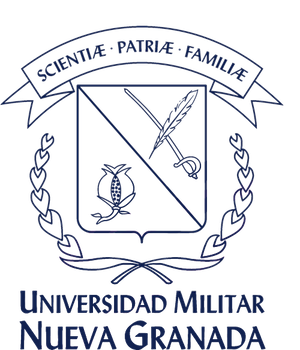Estructura organizacional para una mina de carbón en Boyacá
Resumen
Este es un artículo de revisión que analiza los resultados de investigaciones previas y los contrasta con la teoría de la firma con el propósito de proponer una forma de organización económica para el sector minero de Boyacá. Los resultados señalan que el esquema actual de contratos entre productores e intermediarios es ineficiente y promueve la desigualdad. La mayor proporción de los beneficios queda en manos de los intermediarios, a pesar de que el riesgo y el esfuerzo recaen sobre el productor, principalmente. Se presentan tres diferentes formas de organización para el sector y se analizan los aspectos positivos y negativos de cada una de ellas a la luz del marco teórico propuesto. Como en su mayoría los productores de la región son pequeños y se caracterizan por una alta heterogeneidad, se concluye que el esquema de alianzas es más eficiente económica y socialmente en la relación entre productor y mercado.
Descargas
Lenguajes:
porReferencias bibliográficas
Act 354/2009 del Ministerio de Minas y Energía. Área de Reserva Especial en el Municipio de Jericó, Departamento de Boyacá, Resolución 354 (2009) Diario Oficial Año CXLIV. N. 47567, Diciembre.
Allen, J. W. & Phillips, G. M. (2000). “Corporate Equity Ownership, Strategic Alliances, and Product Market Relationships”. En: The Journal of Finance, 55(6): 2791-2815.
Amaratunga, D. & Kumar, R. (1994). “Government policies towards small-scale mining”. In: Resources Policy, 20(1): 15–22.
Apreda, R. (2001). “The Brokerage of Asymmetric Information” (CEMA Working Papers: Serie Documentos de Trabajo. No. 190). Universidad del CEMA.
Artz, K. & Brush, T. (2000). “Asset specificity, uncertainty and relational norms. In: Journal of Economic Behavior & Organization, 41(4): 337-362.
Ashoka, M. (1993). “Learning through alliances”. In: Journal of Economic Behavior & Organization, 20(2): 151-170.
Aspinall, C. (2001). Small-scale mining in Indonesia. International Institute for Environment and Development, Mining Minerals and Sustainable Development Report, (79) 30.
Barry, M. (1995). Regularizing informal mining. Industry and Energy Department Ocasional Paper, World Bank Technical Papers Energy Series, 6). Presented at the A summary of the proceedings of the international round table on artisanal mining, Washington: World Bank.
Benavides, J., Cabrera, P., Salazar, N. & Zapata, J. (2011). Pequeña y mediana minería de carbón del interior del país: alternativa de comercialización y financiación a partir de la conformación de alianzas estratégicas. Informe Final, Bogotá, D.C.: Fedesarrollo
Betancurt, L. (2002). Sustainable indicators of the small coal mining in Colombia. Indicators of sustainability for the mineral extraction industries: 201-224. Brazil: CYTED-CETEM.
Bonus, H. (1986). “The cooperative association as a business enterprise: a study in the economics of transactions”. In: Journal of Institutional and Theoretical Economics (JITE)/Zeitschrift Für Die Gesamte Staatswissenschaft: 310–339.
Bucklin, L. P. & Sengupta, S. (1993). Organizing Successful Co-Marketing Alliances. The Journal of Marketing, 57(2), 32–46.
Chakravorty, S. (2001). “Artisanal and small-scale mining in India”. In: Mining, Minerals and Sustainable Development, (78), 81.
Contractor, F. J. & Lorange, P. (2002). Cooperative strategies and alliances. USA: Emerald Group Publishing.
DANE (2011). Informe de coyuntura económica regional -ICER 2011. Bogotá: Banco de la República-DANE.
Das, T. K. & Noushi, R. (2002). “Opportunism dynamics in strategic alliances”. In: Cooperative strategies and alliances (1 Edition) Elsevier Science Boston, MA.
Davidson, J. (1993). “The transformation and successful development of small-scale mining enterprises in developing countries”. In: Natural Resources Forum, 17(4): 315–326.
Dreschler, B. (2001). 2Small-scale mining and sustainable development within the SADC region”. Mining, Minerals and Sustainable Development, (84), 165.
Fothergill, S. (1994). “The Impact of Regional Alliances: the Case of the Eu Coalfields”. In: European Urban and Regional Studies, 1(2): 177 -180.
Frankel, R., Whipple, J. S. & Frayer, D. J. (1996). “Formal versus informal contracts: achieving alliance success”. In: International Journal of Physical Distribution & Logistics Management, 26(3): 47–63.
Franks, D. M., Brereton, D. & Moran, C. J. (2010). “Managing the cumulative impacts of coal mining on regional communities and environments in Australia”. In: Impact Assessment and Project Appraisal, 28(4): 299–312.
Gehrig, T. (1993). “Intermediation in search markets”. In: Journal of Economics & Management Strategy, 2(1): 97–120.
Gillingham, J. (1995). “The European coal and steel community: an object lesson?”. In: Eichengreen (Ed.) B. Europe’s post-war recovery. Great Britain: Cambridge University Press.
Gordon, R. L. (1987). World coal: economics, policies, and prospects. Great Britain: Cambridge University Press.
Güiza, L. (2010). La minería de hecho en Colombia. Bogotá: Defensoría del Pueblo.
Haeussler, C. & Higgins, M. J. (2013). “Strategic Alliances: Trading Ownership for Capabilities”. Presented at the 35th DRUID Celebration Conference, Barcelona: ESADE Business School. Retrieved from http://www.wiwi.uni-passau.de/fileadmin/dokumente/lehrstuehle/haeussler/Publikationen/ Publica-tions_in_Refeered_Journals/Haeussler_Higgins_Trading_Ownership_for_Capabilities_JEMS.pdf
Hansmann, H. & Kraakman, R. (2000). “Organizational law as asset partitioning”. In: European Economic Review, 44(4-6): 807–817.
Hart, O. D. (1988). “Incomplete Contracts and the Theory of the Firm”. In: Journal of Law, Economics, & Organization, 4(1) 119–139.
Hart, O. & Holmstrom, B. (2010). “A theory of firm scope”. In: The Quarterly Journal of Economics, 125(2): 483-513.
Hilson, G. (2009). “Small-scale mining, poverty and economic development in sub-Saharan Africa: An overview”. In: Resources Policy, 34(1): 1-5.
Inkpen, A. C. & Ross, J. (2001). “Why do some strategic alliances persist beyond their useful life?” In: California Management Review, 44(1).
Jähnig, A. (2007). Coal Deposits of Colombia. Master Thesis. Freiberg, Technische Universitat Bergakademie Freiberg.
Kandemir, D., Yaprak, A. & Cavusgil, S. T. (2006). Alliance orientation: conceptualization, measurement, and impact on market performance. In: Journal of the Academy of Marketing Science, 34(3): 324–340.
Kitula, A. G. N. (2006). “The environmental and socio-economic impacts of mining on local livelihoods in Tanzania: A case study of Geita District”.In: Journal of Cleaner Production, 14(3-4): 405-414.
Koljatic, M. & Silva, M. (2011). “Alliances in SMEs and cooperatives involved in business with low income sectors in Latin America”. In: Revista Innovar, 21(40).
Krug, B. & Mehta, J. (2001). Entrepreneurship by Alliance (Report series No. ERS-2001-85-ORG). Erasmus Universiteit Rotterdam: Erasmus Research Institute of Management (ERIM).
Lahiri-Dutt, K. (2007). “Illegal coal mining in eastern India: Rethinking legitimacy and limits of justice”. In: Economic and Political Weekly: 57–66.
Law 141 (1994) Diario Oficial. Año CXXX. N. 41414. 30, Junio. Creación del Fondo Nacional de Regalías, la Comisión Nacional de Regalías, y regulación del derecho del Estado a percibir regalías por la explotación de recursos naturales no renovables.
Law 685 (2001) Diario Oficial. Año CXXXVII. N. 44545. 8, Septiembre. Código de Minas.
Law 1382 (2010) Diario Oficial. Año CXLIV. N. 47618. 9, Febrero. Modificación a la Ley 685, Código de Minas.
Mejía, T. S. (2005). La cadena del carbón. El carbón colombiano: fuente de energía para el mundo. Bogotá, D.C.: Ministerio de Minas y Energía-UPME.
Mesa Sectorial de Minería (2003). Caracterización ocupacional del sector minero (Estudio de caracterización). Sogamoso: SENA.
Molefe, N. & Ashworth, S. G. E. (2004). Transformation of the coal mining procurement supply chain. Retrieved from http://www.coaltech.co.za/chamber%20Databases%5Ccoaltech%5CCom_DocMan.nsf/0/ED183AAA1D7CBBE042257441002A58FA/$File/Task%203.8.3%20-%20SMME-BEE%20Procurement.pdf
Multcher, J. (1980). Coal-Cooperative Efficiency Program: small-mine operations. Berger Associates; Appalachian Regional Commission
Murry, D. & Zhu, Z. (2008). “Asymmetric price responses, market integration and market power: A study of the U.S. natural gas market”. In: Energy Economics, 30(3): 748–765.
Pierson, F. C. (1950). Prospects for Industry-Wide Bargaining. In: Industrial and Labor Relations Review, 3(3): 341-361.
Ponce, A. (2005). Distritos mineros: exportaciones e infraestructura de transporte. Bogotá: Unidad de Planeación Minero Energética -UPME.
Pooe, D. & Mathu, K. (2011). “The South African coal mining industry: A need for a more efficient and collaborative supply chain”. In: Journal of Transport and Supply Chain Management, 5(1): 316–336.
Rieber, M. & Soo, S. L. (1975). “Feasibility of coal mine cooperatives: a preliminary report and analysis”. Urbana, Ill.: University of Illinois at Urbana-Champaign; Center for Advanced Computation
Ruiz, C. F., Henao, D., Lozano, M., Colorado, L. A., Mora, H., Velandia, J. & Salazar, M. (2012). Plan estratégico departamental de Ciencia, Tecnología e Innovación -PEDCTI. Departamento Administrativo de Ciencia y Tecnología -COLCIENCIAS.
Ruiz, H. (2007). Comportamiento del Sector Minero Colombiano 2004-2006. Bogotá: Superintendencia de Sociedades.
Spulber, D. F. (1989). Regulation and markets. USA: MIT press.
Spulber, D. F. (1996a). “Market Making by Price-Setting Firms”. In: The Review of Economic Studies, 63(4): 559–580.
Spulber, D. F. (1996b). “Market microstructure and intermediation”. In: The Journal of Economic Perspectives, 10(3): 135–152.
Spulber, D. F. (2009). The theory of the firm: microeconomics with endogenous enterprises, firms, markets, and organizations. USA: Cambridge University Press.
Tirole, J. (1994). The theory of industrial organization. MIT press.
Tirole, J. (2010). The theory of corporate finance. Princeton University Press.
UPME. (2004). Plan de acción para la sostenibilidad y creación de centros ambientales mineros -CAM, cadenas productivas y plan padrinos. Bogotá: Ministerio de Minas y Energía-UPME.
Vyas, N. M., Shelburn, W. L. & Rogers, D. C. (1995). “An analysis of strategic alliances: forms, functions and framework”. In: Journal of Business & Industrial Marketing, 10(3): 47–60.
Warner, M., & Sullivan, R. (2004). Putting partnerships to work: Strategic alliances for development between government, the private sector and civil society. Greenleaf Publishing.
Wathne, K. H. & Heide, J. B. (2000).“Opportunism in Interfirm Relationships: Forms, Outcomes, and Solutions”. In: Journal of Marketing, 64(4): 36–51.
Wengel, J., Ferreira, G. B., Restrepo, S. & Suárez, L. M. (2008). “Trayectorias empresariales: destrucción creativa, economías de escala, exportaciones y empleo”. In: Revista de La Información Básica, 3(2).












